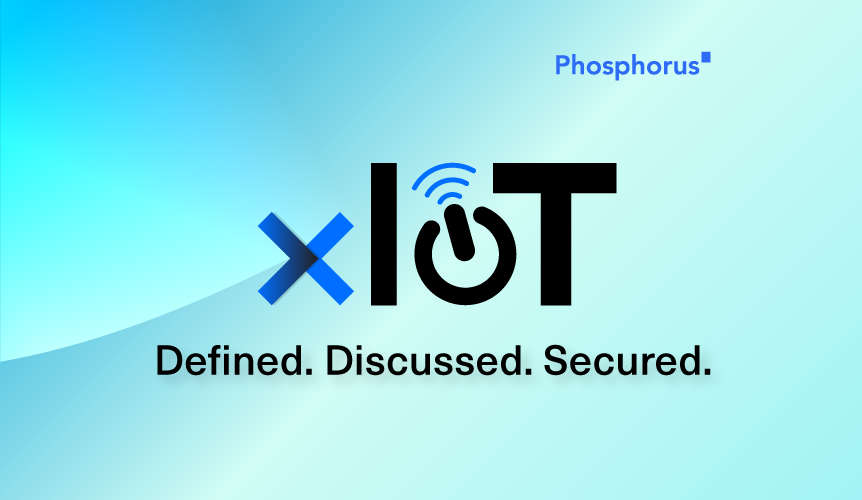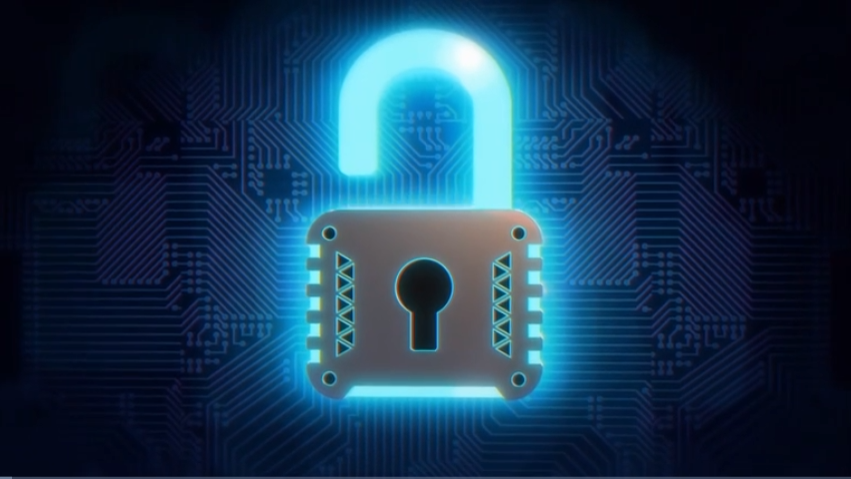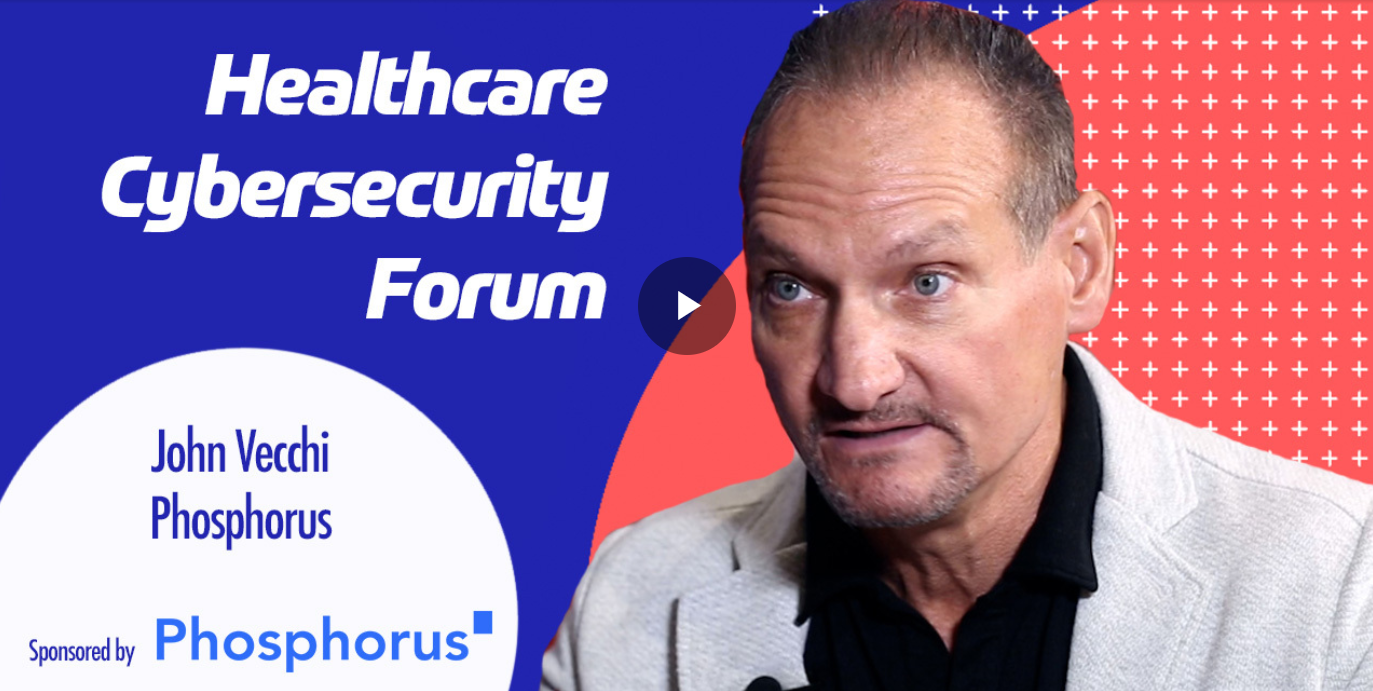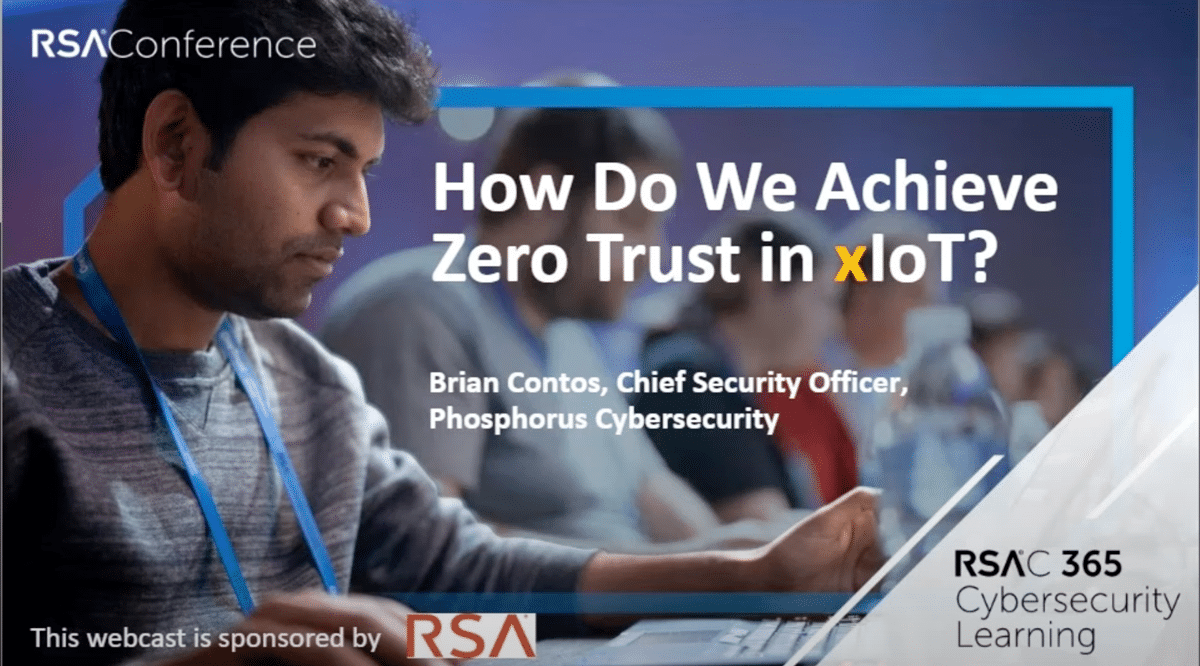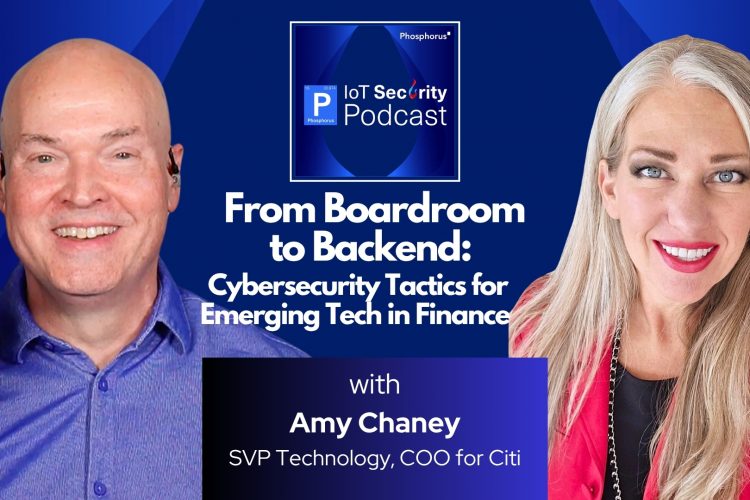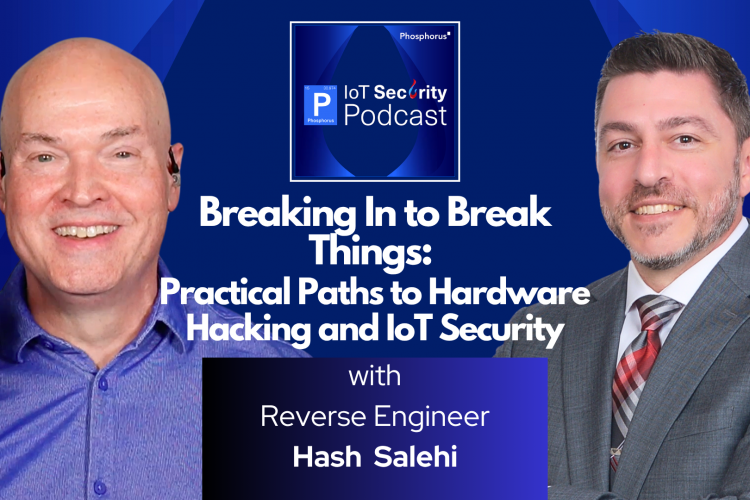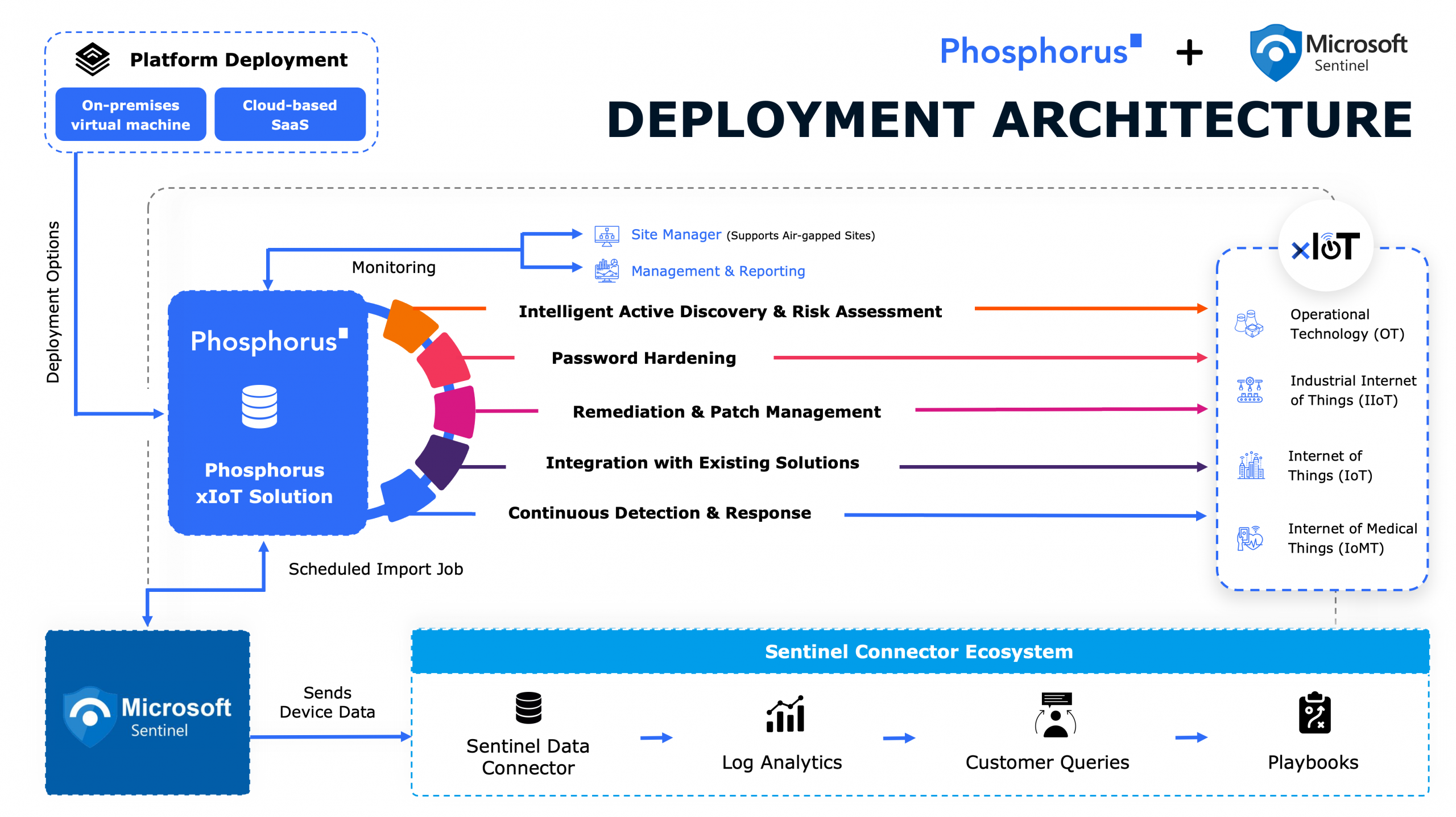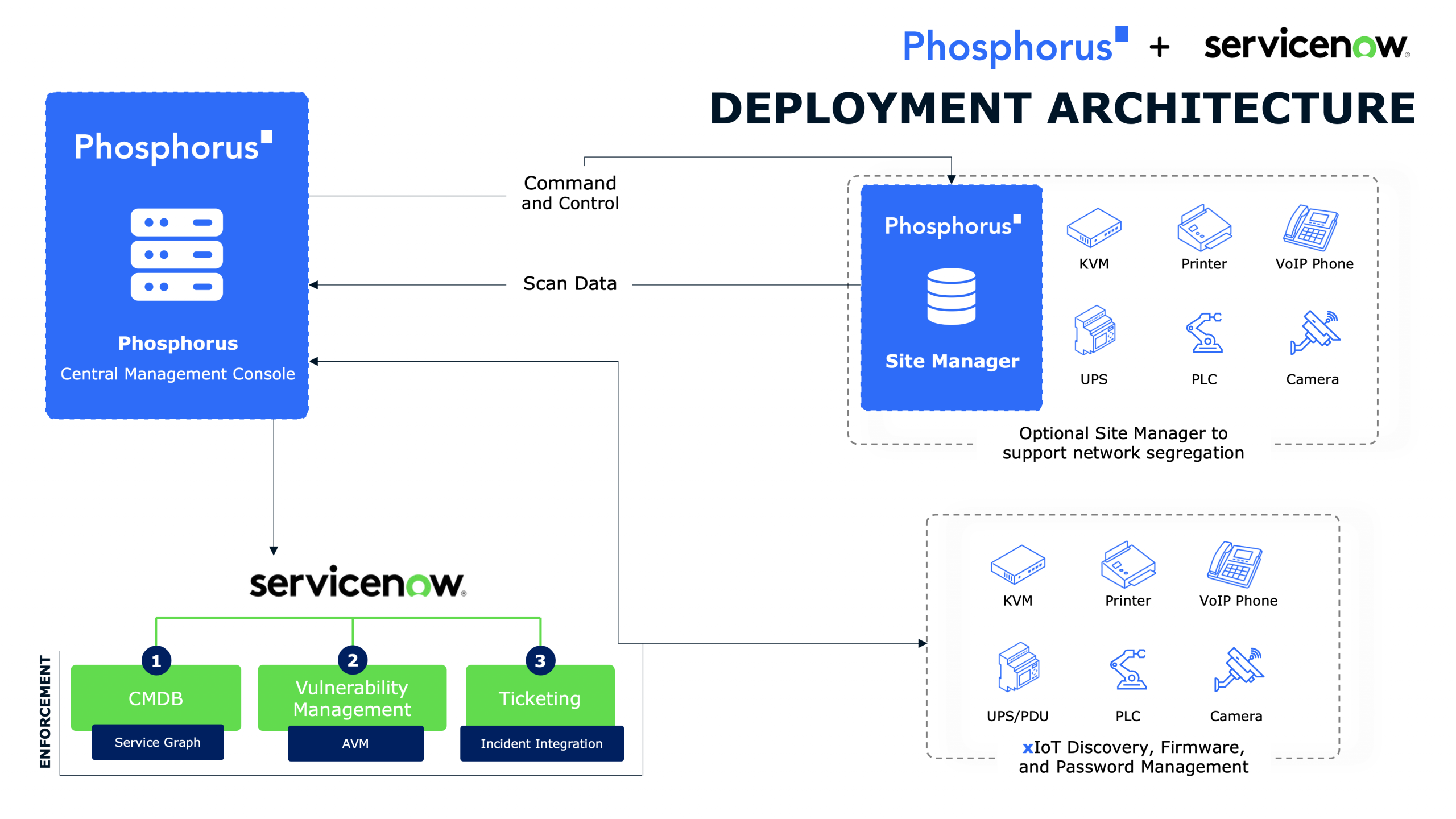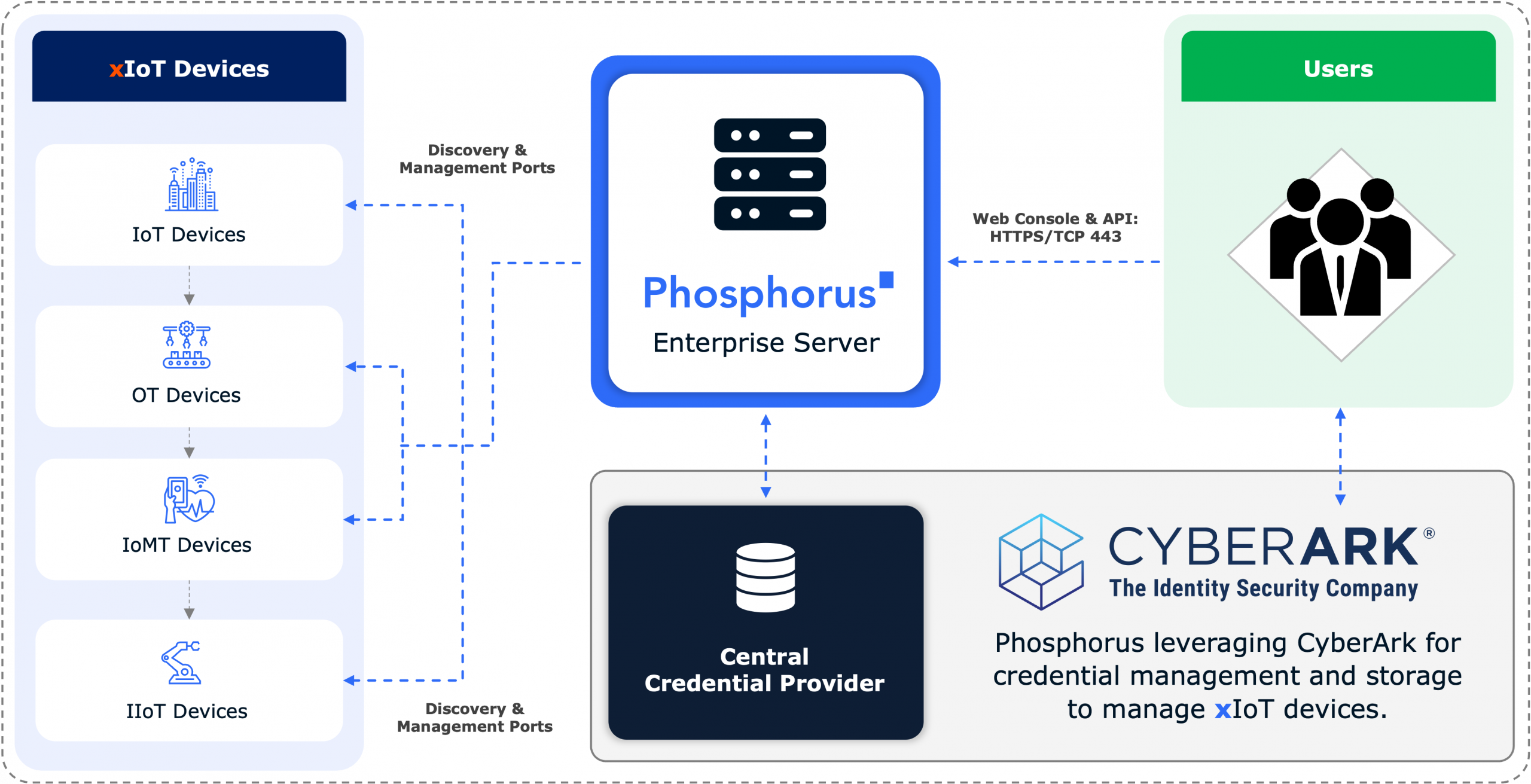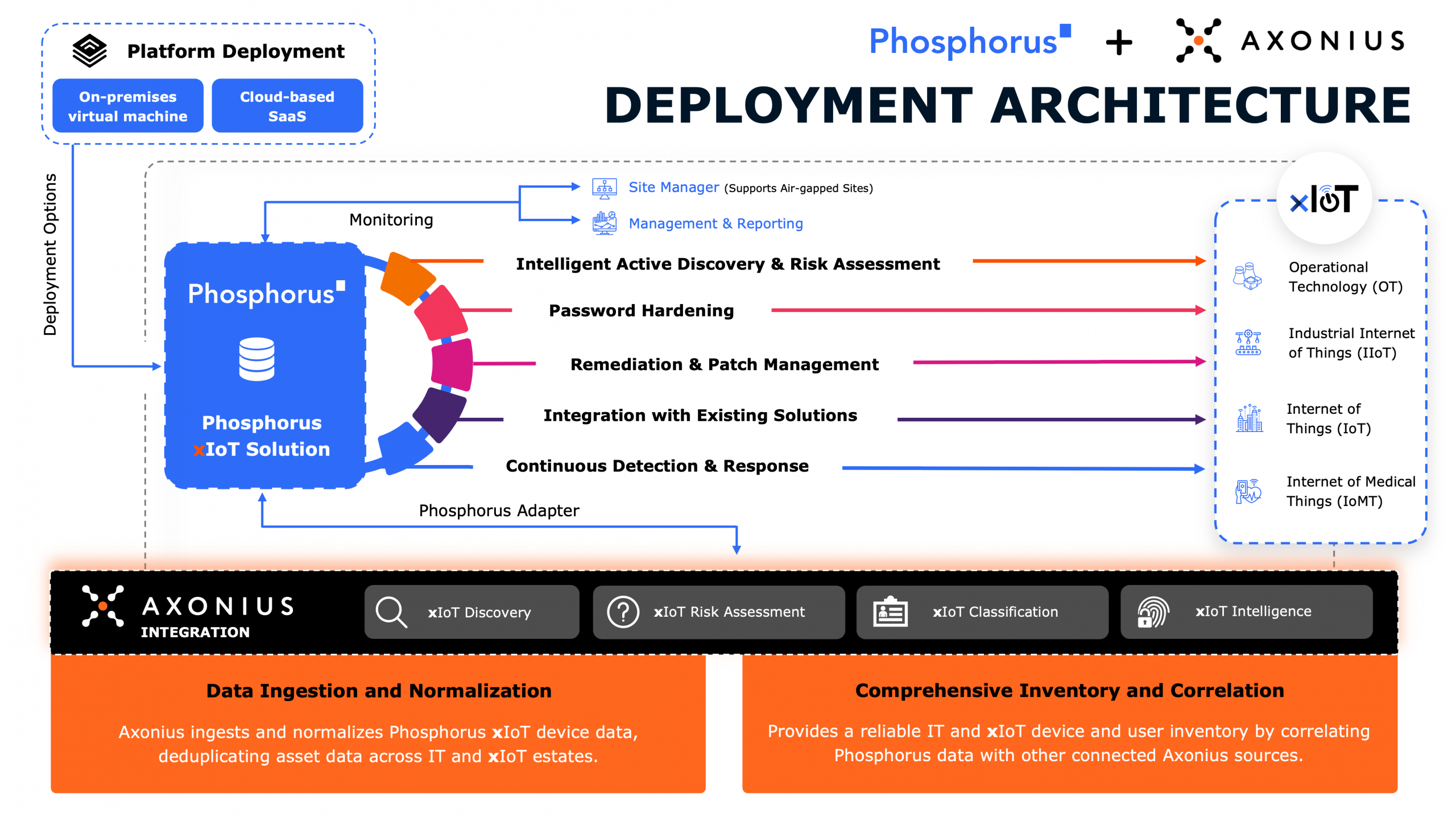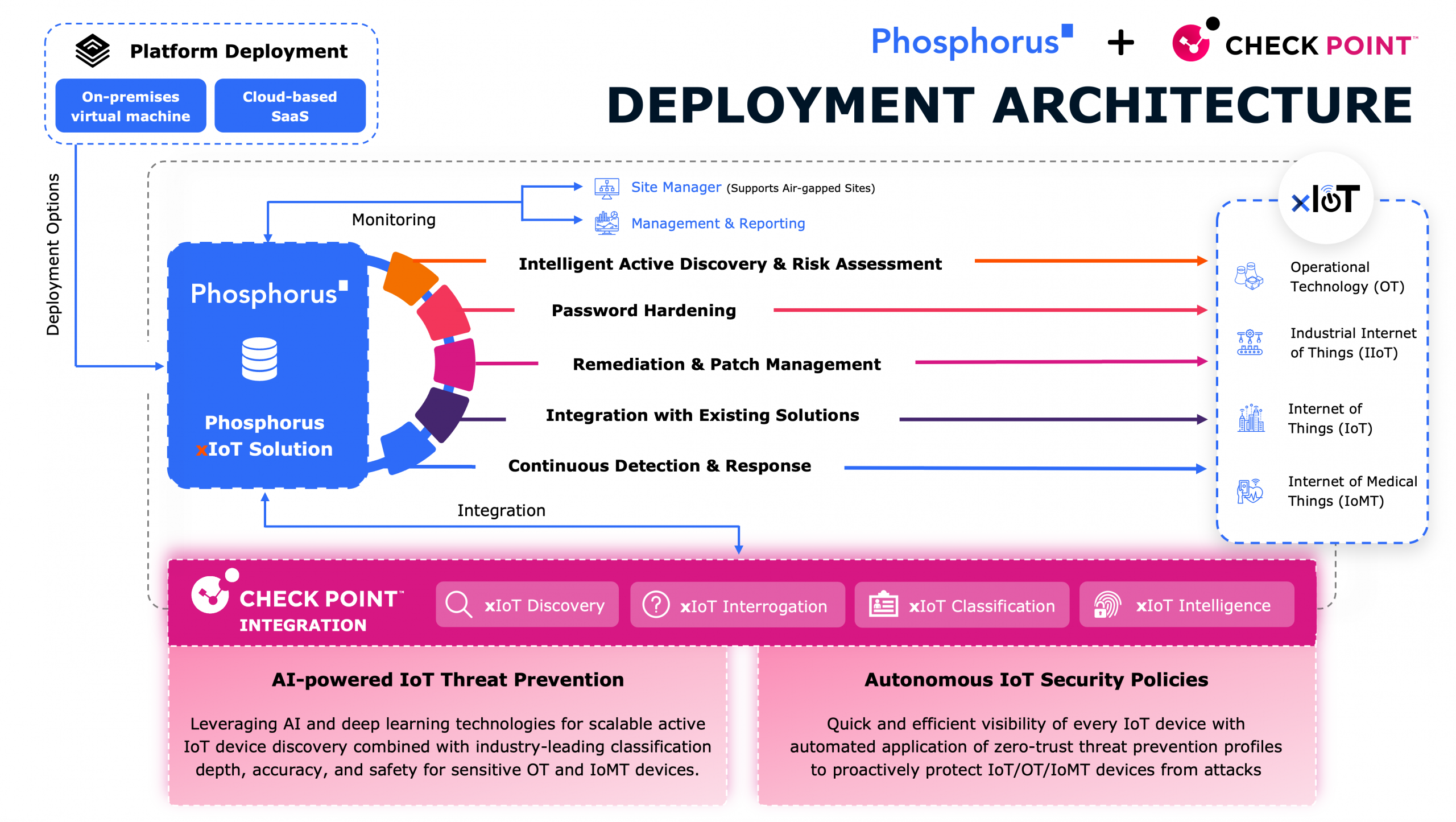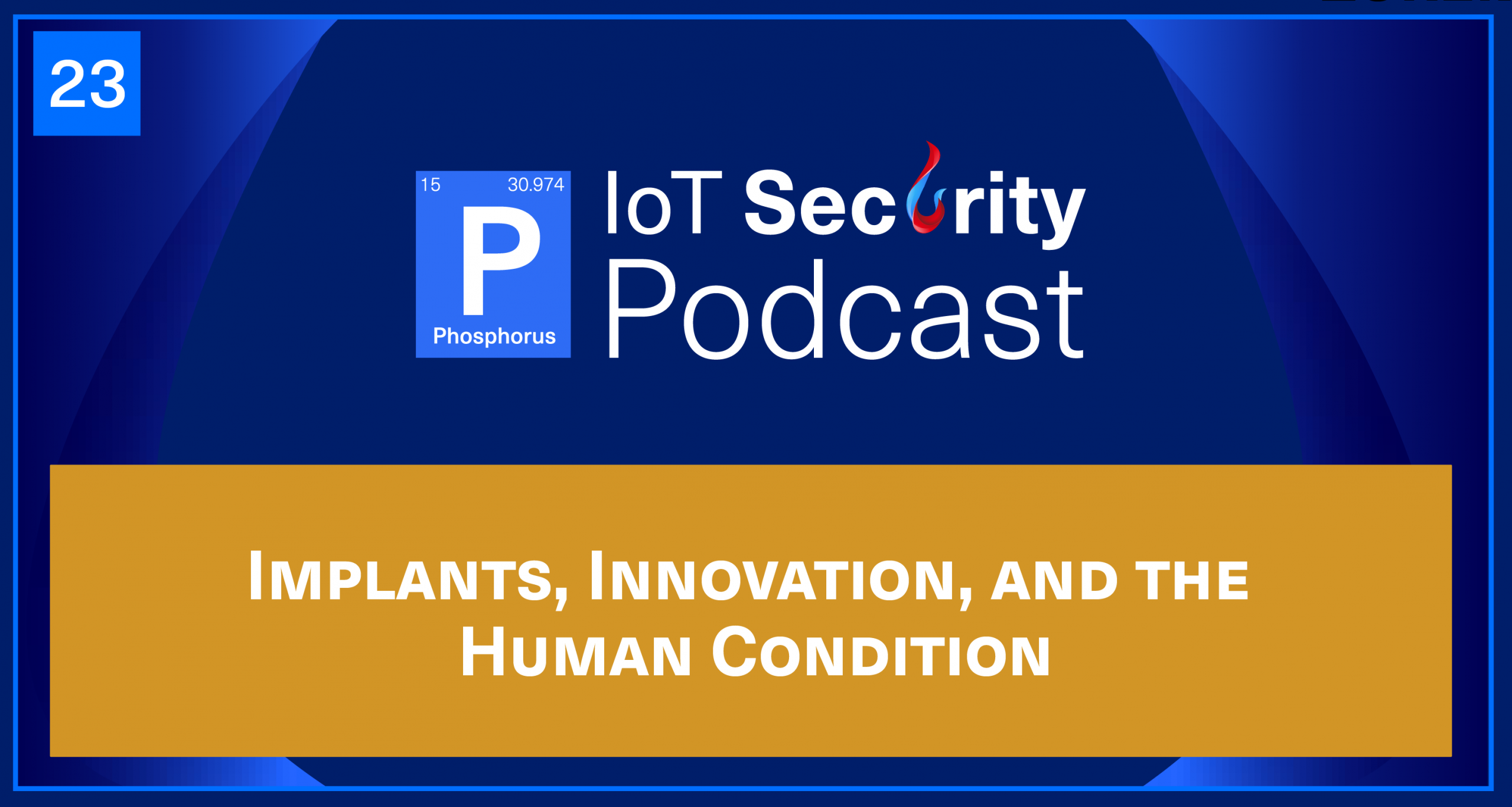
Find the line between man and machine with John, Brian, and guest Len Noe, technical evangelist. Len, the personification of transhumanism and the future of human-machine integration, host to a number of augmentations himself, is a self-taught cybersecurity expert with a unique background in the world of black hat and gray hat hacking. For most of his life, Len delved into the dark side of technology, breaking into computers and causing havoc. However, with the arrival of grandchildren, Len realized that he needed to change his ways. Recognizing that his skills were primarily focused on hacking, Len made the brave decision to use his expertise for good. He embarked on a new journey, putting his unique perspective on security to work for the good guys. Len transitioned from being a malicious hacker to becoming a cybersecurity professional, using his knowledge to defend against cyber threats and secure computer systems.
Len shares his experiences and insights as someone who has embraced technological enhancements and implanted various devices in his own body. From RFID NFC chips to a mini-computer in their leg, Len takes us on a journey through the possibilities and challenges of this emerging field. Join us as we explore transhumanism’s societal, theological, technological, moral, and medical implications. Get ready to dive deep into the possibilities of collaboration, the debates surrounding free will, and the potential benefits and drawbacks of these advanced technologies.
Stay informed and open-minded about the advancements in technology and their potential impact on humanity. Share this episode with others to spark discussions on transhumanism, IoT security, and the future of technology.
Transcript
John Vecchi (00:24):
Well, hello everybody. You’re listening to the IoT Security Podcast, live on Phosphorus Radio, and I’m John Vecchi.
Brian Contos (00:32):
And I’m Brian Contos, and we’ve got the one and only world traveler, biohacker, Len Noe in the house today. Welcome to the show, Len.
Len Noe (00:41):
What’s up guys?
Brian Contos (00:43):
Every time we try to do a podcast with Len, he’s in the middle of a flight, on a train, in a submarine. It’s so hard to get him locked down, but we’re so happy to have you here.
Len Noe (00:54):
Yeah, I really appreciate you guys having me. And sorry about the delays in getting here, but happily here now.
Brian Contos (01:01):
Awesome. Len, before we kick off, maybe you could give folks a little bit of background about you, how you came up in the space, and what exactly it is that you do now in cyber.
Len Noe (01:11):
I didn’t take the education/college road. I’ve always heard the expression, “There’s two ways to get into cyber.” And one is either education or one is, we’ll just say, practical experience. I was a black hat/gray hat for the better part of my life, started having grandchildren and went, “Eh. You got a choice; either they’re going to [inaudible 00:01:36] you behind glass or you need to make some changes.” And unfortunately for me, the only thing I’ve really ever been good at is fighting and breaking into computers. The problem is I continuously get older, and as a result, the fighting thing really doesn’t work. I really only had the option of doing computers, so I decided to actually take my unique perspective on security and start working for the good guys. And it’s been a really amazing change. I like the idea of not being gifted with state-funded vacations.
Brian Contos (02:17):
Awesome. You’re such a prolific speaker, and you travel all around the world, and I know you speak on many, many topics. One of them is biohacking. And you just don’t speak it, you live it. And maybe you could talk a little bit about how that happened and how you turned yourself into an IoT device.
Len Noe (02:40):
The truth is I’ve been getting tattoos and body piercings since I was about 15 years old. I started young. I like to consider myself a modern primitive. I was actually very… What’s the right word? Cognizant of the Transhuman and the H+ communities, but I never really got into doing things like the Firefly or the homemade Grinder implant. I have five daughters, six grandkids, so the idea of playing around and mixing up some two part epoxy in my garage and shoving stuff in my body… I’m not 25 anymore.
(03:24):
Honestly, once I saw that there was commercial-grade implants that you could purchase, then that opened up the space for me to start going down that road. To me, it was just the natural progression of being a modern primitive. I discovered a company called Dangerous Things, they’re based out of Seattle, Washington. They are the largest consumer-grade implant manufacturer in North America. There’s a companion company called KSEC based out of the UK, and these are the two largest commercial grade manufacturers there are. I started with simple bioglass implants. I got a combination RFID/NFC chip as well as a cryptobionic chip, which actually has a companion app on my cell phone, can be used for multifactor authentication, things of that nature.
(04:23):
From there, it started to grow. Due to the variances in different types of contactless technologies, I saw more and more options to embed these technologies and turn myself into a walking attack vector. From there, I switched from the bioglass into the flexible membrane, which… The bioglass, they literally look like just a large, long piece of rice, like a grain of rice. The problem with those are is they don’t always stay where you put them. For example, one of them, when I originally had it done, I put it in the webbing right up here between my pinky and my ring finger, and it’s now down here towards my wrist. The flexible membrane actually stay in place.
(05:19):
Currently, I have 10 different implants. I have everything from biosensing magnets in my hands that actually allow me to feel electromagnetic fields and currents. I had a credit card up until about a month ago, at which point the credit card processor terminated his contract with Walletmor. So now I have an implant in my hand that does absolutely nothing, but for a while there, I was actually able to tap to pay with my hand. I have an 8K NFC, I have e1000 RFIDs, but honestly, I think my favorite chip right now is actually the VivoKey Apex, which is the newer version of that cryptobionic. This will allow me to do OTP, SHA-1 hash Generation. It’s got the ability to tie into crypto wallets for multifactor authentication. And if you own a Tesla, you can even put your valet fob on your implant and just get in your car and drive.
Brian Contos (06:28):
Oh, that’s really convenient. That’s super nice. Now, when you do the membrane ones, do those actually stitch in or are they like the glass, they’re just surgically implanted or injected?
Len Noe (06:38):
I have done both. I’ve done the surgical implants. The large one that you see here in the front of my hand, this is actually larger than a half dollar. This was scalpels, dermal elevators, the whole nine yards. The way that they’re doing most implants now is more of an injection style, but they have created a very special needle. It’s about the size and diameter of a pen, like a typical pen that you would write with, but when it goes through the skin, it actually cores out that part of the body and actually leaves a pocket that the implant can then be slipped into. Typically, there’s no need for stitches or anything like that. But when I first got into it, these types of implants or installations were not possible, so it was all stitches, scalpels, and sutures. And the scary part is I did them all completely anesthetic-free.
Brian Contos (07:45):
Oh, wow.
Len Noe (07:47):
This is not something that… I haven’t seen a single doctor in regards to implementation of any of these chips.
John Vecchi (07:56):
Who does it then? I was going to ask you, did you have any issues with those in the medical profession saying they don’t want to do that. I imagine that was the case, which is could be why you’re using alternative resources for that.
Len Noe (08:11):
Yeah, shout out to Pineapple over at Shaman Body Modification in Austin, Texas. I go to a body modification parlor, the same people that would put gauges in your ears or split your tongue or something like that. This is the guy that does all of my installs. It’s kind of weird. We talk about installs, is how we refer to it in the Grinder community. It’s like, “You’re going to get an upgrade?” “Yeah, I’m going to get an upgrade.” I guess I’m Len 10.0, at this point.
Brian Contos (08:46):
Now I’ve heard about some of these implants, and I don’t think it was any of the ones that you’ve mentioned, but there was one that I read about that is screwed into your femur. In some people, it was getting really hot and it was causing problems and they had to have emergency surgery to remove it. Is that back in the old [inaudible 00:09:05] days of this stuff?
Len Noe (09:07):
If you think that one’s bad, look up the Firefly implant. This one uses radioactive material and will glow through your skin, almost like Iron Man. And this was a big thing in the community, back in the day. My current project I’m working on is I’m taking a Raspberry Pi Zero W and I’m implanting it in my leg with an external wireless power transmitter battery that goes into the pocket and then a wireless power receiver on the Pi itself. And there’s no battery on it, it’s just direct powering. And that’s how we’ve managed to get around the heat problem. But this will allow me to walk around with a full version of Linux in my body that I can connect to and set up auto [inaudible 00:09:59] low energy Bluetooth sweeps and basically configure it through my cell phone and then put my cell phone away.
Brian Contos (10:04):
That’s awesome. Now, can you walk through a airport security checkpoint without setting off alarms?
Len Noe (10:13):
I do it multiple times a month. But here’s the thing that most people don’t get: even if I was detected, there are things like HIPAA and health and privacy laws in Europe that actually prevent anyone from even asking me about it because they’re technically part of my medical history, at this point. I’m even utilizing the laws to help protect my ability to obfuscate these types of technologies.
John Vecchi (10:43):
Wow. Is there a strategy to where you have these devices implanted? I’m imagining a lot of them are probably more on your arms. You mentioned the Raspberry Pi, which is fascinating, more on your leg. Is that where they’re kind of concentrated and is there an advantage one way or the other on where?
Len Noe (11:03):
There is advantages and disadvantages, and placement is extremely critical. Like the large RFID/NFC that I have in the top of my right hand is put there because most of that is an antenna, and that one was put in specifically so that if you have NFC turned on your mobile device and I can convince you to put your device in my hand, that’s all I need. At that point, the fact that most of this large one here is coiled copper wiring, this is strong enough to read through the blade of the hand. And if I’m holding your device in a natural orientation and you have NFC turned on, it will energize the chip and it will respond.
(11:51):
One of the examples that I give is, let’s say we were all in the same room together, and this wasn’t a virtual conversation. I don’t know where you guys are, but if I was to say, “Hey, something just happened. I was on the phone with my wife, something happened to one of my grandchildren and my phone died. Can I borrow somebody’s phone real quick?” Somebody would give me their phone. And if that technology, being NFC, is enabled, that’s all it takes. I can redirect you to a website that is infected with BeEF, the browser exploit extension framework. If it’s an Android phone, I can download an APK and realistically, while I’m sitting there going, “What’s my wife’s phone number? Who remembers phone numbers? We just put them into our contacts.” I can social engineer a situation, and I’ve timed this, it takes about 20 seconds for me to download the APK, install. The icon is hidden. And finally I just act frustrated and say, “I don’t remember her name. I’m just going to plug my phone in. But thanks anyway.”
(12:54):
I’m already in your system before I even hand your device back to you. I think one of the more scary options is the physical access. I have the ability to work with almost 127 different physical access protocols, from Pyramid, Diamond, Indala, HID, One-, Two-, and Three-, prox. If I can scrape the data off of your card, I can write it down to one of the chips in my hands. John, to answer your earlier question, right now, all of the implants are between my elbows and my fingertips, in both my left and my right arm.
Brian Contos (13:35):
Interesting. Now, one of the things that we deal with at Phosphorus for Enterprise xIoT, any kind of embedded firmware from a wireless access point to a security camera to PLCs on the industrial control system side, is after discovery, it’s managing the credentials, updating the firmware, hardening the devices by turning off unneeded ports, protocols, that sort of thing. Do you go through a similar process with these devices? Do you secure them? Do you modify them to shut off Telnet that’s running in your arm?
Len Noe (14:04):
Oh, yeah. Unfortunately, they’re not that intelligent yet. Essentially, everything that’s in my body right now, with the exception of the magnet, is the same thing that would be on one of your badges. All of the tags are in a inert state until they come into contact with a reader’s energy field. That’s why I was saying a minute ago, let’s move on to what I consider to be one of the more dangerous aspects of having a transhuman in your employ. This is the scenario. Brian, let’s say I scrape your bat, I write it down to one of my implants, I go into your office, and I wind up in your data center.
(14:51):
Let’s be very honest about what the order of events that would probably take place afterwards would be. Let’s be honest. Operational security would probably come in, they would grab me, they would stick me in a room, “What were you doing in there? How did you get in there?” “Well, I was walking through the building, I saw this door open and there were all these racks of computers like I see on TV all the time. I thought it was cool. I just wanted to go and take a look.” “Well, you’re not supposed to be in there. How did you get in there?” “The door was open.” “We’re calling the police.” The police will come. They will search me. They will not find a prox mark, they won’t find a cloned card, they won’t find any type of tools. The worst they’re going to be able to do is trespass me off of that property. I will not get arrested and I’ll be able to walk away free.
(15:39):
Now the problem is with all the other potential things that I may have already done while I was in there. Maybe I had a USB rubber ducky or a bash bunny or a WHID cactus. You were talking about IoT. If there’s any type of IoT receivers and sensors in there, I can physically interact with those sensors, especially around assembly lines and manufacturing process. The one thing I will say right here, because we’re talking a lot about what are the bad things that a transhuman could potentially do, this does not mean that all transhumans are this way. And unfortunately, we do get stung with a very bad stigma. And as a result of that, people look at us with what I would consider to be an unrealistic fear. I’ve had friends of mine that will literally take the batteries out of their cell phones when I show up at their house.
(16:41):
I swear to God, I think they’re expecting my face to slide off and I’m going to have a Terminator face underneath me. But I don’t see this any different than anything else because if we look at it from the thousand-foot view, it’s only the elective processes that get this kind of scrutiny. If you were a type 1 diabetic and you are using an insulin pump, you’re a transhuman. You are using technology to enhance the human condition. People with a pacemaker would be considered transhuman. People who are using stem pain management systems.
(17:21):
But the only people that seem to get this kind of scrutiny and wind up being told that you may have the mark of the beast or you’re some kind of individual to be feared just because I exist… I think a lot of those types of people need to understand that this is the technology moving forward, and the only difference is the perception in what you’re looking at. As long as you’re addressing a deficiency of the human body, nobody seems to care. But when you want to enhance the human condition, people think that you’re some kind of a freak and react accordingly.
Brian Contos (17:57):
Building on that, where do you see this evolving? And let’s not think too far in the future, but maybe over the next five, 10 years, do you think transhumans will be able to have a device implanted that allows them to maybe communicate with other transhumans or improves sight, improves hearing, things of this nature?
Len Noe (18:17):
When it comes down to it, we’ve… Oh God, I’m drawing a mind blank on his name. But he was the very first registered transhuman. He was blind. Oh god, he’s an artist. I want to say he’s German or Swiss. But he has this strange antenna thing that’s coming out of the back of his skull that is interpreting the world digitally and then, through electrodes in his brain, he’s able to have a somewhat skewed version of sight. If you take a look at BCIs in general, places like Blackrock Neuroscience, you have Syncron, Tesla’s Neuralink. I think that we’re going to see a lot, and one of the big things that I think is going to be driving this personally is the fact that we’ve seen so many breakthroughs around graphene battery technology.
(19:15):
Currently, when it comes to commercial grade implants, even the Raspberry Pi that I’m putting in my leg, which is called a peg leg, none of these are internally powered. There is not a single device that you can buy commercially that you can put in your body that has any internal power. This has been one of the main sticking points when it comes to embedded systems. This is why we’re still dealing with technology that we’re getting the power from the electromagnetic fields of the receivers as opposed to the devices themselves. Due to the fact that we’re seeing a lot of breakthroughs in the graphene technology, costs are now starting to be coming down a little bit. When we can get the ability to power an embedded device for… I’m even going to say two to three years, I think we’re going to start seeing more actual systems as opposed to tags.
John Vecchi (20:17):
It’s interesting how you were talking about really you’re going to alternative piercing studios, things like that. Do you see that because it hasn’t quite moved over to the medical side, aside from medical instances like heart pacemakers and different things very specifically, do you see that when it crosses over to the medical side as far as other enhancements to the human body, will that change it, do you think? Will that change the perception? Will it change the kind of frequency and commonplace of this or not?
Len Noe (20:53):
I think it has to. And to be honest with both of you, I really thought that the Walletmor implant would be the chip that starts pushing transhumanism into the mainstream, because it was a credit card. I won’t lie, the first time I ever used it, I was in a Avis rent a car in Detroit, Michigan waiting in line, and I walked up to the machine, just tapped the machine with my hand, selected a beverage, and this woman came up right behind me and just started slapping the machine because it wouldn’t give her a drink. I’ve been told that I have the mark of the beast. I’ve been told that people are afraid that when I walk into a room, I’m going to hack their computers.
(21:43):
And I have to go back to what I recently said. Nobody seems to have an issue if somebody who’s a diabetic walks into a room with an insulin pump. I think a lot of this comes from cultural stigmas. I think it is the fear of the unknown. If I had a dime for every time somebody said, “You’re my first cyborg that I’ve ever met,” I wouldn’t have to work anymore. But the truth is, there are more of us out there than people want to believe. Like I said, the two main distributors are Dangerous Things and KSEC, and between the two of these guys, there’s been hundreds of thousands of these things that have been sold commercially. Now, that’s not to say that they’ve all wound up in a human being. But if we just look at the concept that they would purchased, I’d say you could probably still suggest over 80% of those have wound up inside of a person. There is a transhuman movement that’s already here. Most people just don’t talk about it because of the negative attention that it can bring.
John Vecchi (22:56):
Just that stigma, the kind of immediate reaction that come from it. Who is the cohort that you would say represents the bulk of transhumanism? Who are all of these? Are they a lot like you? I’m sure there’s a big mixture.
Len Noe (23:15):
Most people, honestly, are just everyday Joe average people. Maybe they have a shared garage, they’re in an apartment complex. I’ve even gone so far as, at one point, I put my badge to get into the CyberArk office on an implant just so I didn’t have to worry about remembering it when I went to Boston. Most of the usage of these are exactly what they are supposed to be for. It’s a fob replacement, it’s a key card replacement, it’s the ability to get into your Tesla and drive it, it’s getting secure true multifactor OTP codes by scanning an implant as a physical proof of… Not only is it something you have and something you know, it’s something you have that’s inside your body and something you know. So it adds an additional secure factor.
Brian Contos (24:15):
And I just feel that this is so much the tip of the iceberg. You’re like an explorer, you’re like Magellan. You’re the early group of people going after these types of things. But if I played out in my head, I’m thinking, look, if we’re going to achieve something like deep space travel, our bodies… Stuff starts to break down and you need to start replacing parts. If you’re going to live for a couple hundred years, you’re going to have to have some type of cyborg, cybernetic-type replacements in your body that follow this.
(24:47):
The other area that I think is really interesting is people’s ability to collaborate without having a phone. Maybe I’m just sitting in a classroom and I’m able to collaborate with other people mentally or do a Google search or something like that, and I don’t have to access anything with my fingertips. It’s just all done mentally, somehow. And that, to me, is really fascinating. Probably a nightmare for teachers. When kids are taking tests, we’ll have to adapt. Just like with ChatGPT, we have to adapt. But to me, that’s almost like an evolutionary characteristic when we’re able to start having these hive-mind type of conversations, if you will.
Len Noe (25:27):
I’ve given that a lot of thought. Is transhumanism the next step in human evolution? Maybe. One of the things that I bring up in regards to the transhumanism discussion that I think very much applies to cyber in general is, how do you validate the identity of a human being anymore? Especially when we look at deepfakes, we look at AI chat models and chatbots that can figure out your speech patterns and how you talk. Is the idea of something like the VivoKey Apex going to be… Is this one of the options for a validator to a human’s individual identity?
(26:11):
Because realistically, biometrics, as much as they’re great, there’s not a single biometric out there that hasn’t been bypassed, counterfeited, or spoofed. The technologies around biometrics are not 100%, but then again, nothing else it is. Now we’re in a stage where right now, we’re over a video chat. There is no SSL lock on my window that says this is a secured session and you are really talking to the real Len Noe. And I think that the ability for transhumanism, as well as the ability to embed systems, might be one of the things that we can use in the future as that individual validator.
John Vecchi (27:00):
We call them cyber physical systems now, and boy, you embody, literally, what that is. And again, you’re talking about the physical side to all of this. These systems, the idea of securing them, as well, and it’s different than securing data and information. We’re securing a thing that actually is interacting physically with something. And in your case, with you, literally with your body, it’s very different than other what we think of as IT systems and IT security and data. It’s so different. It’s like you’re literally a walking cyber physical system. And like you said, you’re also a walking attack surface. I’m wondering, do you leverage it from a research perspective? Are you a walking honeypot? Are you getting attacked?
Len Noe (27:52):
Sometimes. Back to your question earlier about do I have to do upgrades on my firmware and things like that? No. Like I said, these tags are basically inert until they wind up being energized by the field of the reader. But that doesn’t mean that somebody can’t maliciously attack me. I went out and bought a set of them. I know this is corny, but I bought some leather racing gauntlets, like driving gloves. And I bought Faraday fabric and paid a seamstress to disassemble the gloves and line them with all the Faraday fabric so that way I can go to places like Defcon or GITEX or Black Hat and not have to worry about somebody closing out the tags that are in my hands because I’m well known that I have them. I do have to consider the fact… The tags are almost like the old CD-RWs. They’re rewritable, but they can be closed and written permanent. To be able to protect myself, I had to put a barrier between myself and the outside world just as if I was an enterprise. The only difference, my firewall is Faraday.
Brian Contos (29:07):
Yeah, I was just going to say how long until people have so many devices or they’re so advanced that there’s going to have to be some type of internal firewall or monitoring capability to alert you when someone’s trying to access your systems.
Len Noe (29:20):
To be honest, I thought of this and I’m wondering if the concept of Faraday clothing… Now, Brian, John, if you guys decide to start up Phosphorus Tech Wear and you’re selling hoodies and underwear and pants and socks, all I want is there needs to be the Len line somewhere, since I gave you the idea.
John Vecchi (29:43):
Yes, exactly. It’s like Michael Jordan and the Air Jordans.
Len Noe (29:48):
Exactly.
John Vecchi (29:49):
It’s the Len Faraday line.
Len Noe (29:51):
Yes, it’s the Len Faraday line of clothing. If you think about it, that’s kind of where we’re going in general. Even with non-embedded systems, more and more stuff out there is trying to get into our devices, our systems, our data, and our lives. How many times have you seen Faraday pouches for credit cards to shut off the C capabilities or passports? I’m not doing anything that hasn’t been done. I’m just doing it with myself as the origination point, as opposed to something outside of myself.
Brian Contos (30:33):
Yeah, yeah. No, this was fascinating, Len. We could talk about this for hours, especially exploring the futuristic side of things, philosophical issues, et cetera. But for the-
Len Noe (30:45):
I’m working on a panel, and if you guys are interested, I’ll let you know. I’ve got all the pieces in place right now, but I have a philosopher, I have a doctor, I have a rabbi, I have a religious theologist, and I have myself as a transhuman, and we are going to be doing a conversation. The panel is just called “The Human,” and where do we see it going over the course of the next 50 to a hundred years from a cultural perspective, a moral perspective, a technological perspective, and an ethical perspective.
John Vecchi (31:23):
Those are all things everyone’s thinking about. You’re right on the forefront of… There are so many conversations about this happening different ways and in different places, and you are definitely a pioneer on this. Let us know. For our listeners, as well, I can imagine everyone listening right now, would love to attend that or listen to that panel.
Brian Contos (31:47):
A hundred percent.
Len Noe (31:48):
The one question that you guys haven’t asked, and I’m going to ask… This might be a little bit unusual for you guys, the guest is going to put you guys on the spot. Let me ask you, and I’ll give you my answer when I’m done or when you guys are finished. But how far is too far? At what point are you no longer a human? Because these are the questions that I get all the time, but when I have these opportunities, I’m in it. I’d rather ask you guys, at what point is it a bridge too far and we’ve lost our humanity and we’re something else? I’m not saying that isn’t the next step on the evolutionary chain, but at what point do you stop being human and become something more?
Brian Contos (32:35):
It becomes very Black Mirror. Because what if I was able to upload my consciousness to some supercomputer or maybe in my case, a pretty low-end computer.
Len Noe (32:47):
[inaudible 00:32:46] 64 somewhere.Brian Contos (32:49):
Am I still human? Do I still exist in a theological perspective? Do I still have a soul at that point? Yeah, I think the line continues to be moved, and I think that’s part of the human existence is what defines us. But that’s my 2 cents. John, what do you think?
John Vecchi (33:06):
I think very similarly, and I think it’s interesting you’ve got a theologist on your panel because in some cases one might say, “I guess it might be too far when we don’t have free will any longer.” Someone might be controlling it for us, and free will is the essence of our ability to live and exist and make decisions. And if that perhaps gets compromised, as Brian said, where someone else’s controlling it, maybe that’s too far. It’s interesting because there’s definitely social, theological, as well as the technological angles to this. And moral side and even the medical side. Because it’s so contrasting. These things can go so far to help someone medically or help you do something. On the other hand, what happens, like you said, if it goes so far, you don’t have control anymore?
Len Noe (34:03):
I think those are great answers. John, I loved your answer. Absolutely loved it. Free will? That’s the first time somebody’s thrown that one out there. But I think that’s a very good answer. I don’t personally think it ever changed. I still think I’m a human. I just think I’m a human with some different capabilities. I don’t see myself, honestly, much different than somebody that can play the piano or maybe there they’re a masonry worker. The only difference is I didn’t have to go to school to get these capabilities. I had to go to a body modification [inaudible 00:34:37].
Brian Contos (34:37):
At the end of the day, it’s-
Len Noe (34:41):
One last thing. One last thing, and I know we’re coming right out of science fiction here, but if you just think about the concepts of the BCIs, the brain computer interfaces, and you remember that scene from the Matrix where Neo sits up and he goes, “I know kung fu.” What’s to stop that from happening?
John Vecchi (35:02):
Exactly.
Len Noe (35:06):
We don’t need school anymore.
Brian Contos (35:08):
To be a truly evolved species, we would just learn while we sleep. It’s like, “I woke up, I speak French, and I can fly a helicopter now.” That’s amazing.
Len Noe (35:17):
I don’t know where’s it’s going to end up, but I will say this, you can’t unring the bell. Transhumans are here and we are here in large numbers. The only difference is most of them are not going to tell you about their implants. Me, I am who I am, and I have no problem telling everybody, yeah, I am multiple implanted and I’m going to probably be much more before I’m dead. Because I don’t see myself stopping. And as the technology… Right now, I feel like I’ve got 386s in my hands and I’m just waiting for that Pentium to get there so I can start doing more. But once we have the ability to have those embedded systems, every rule that we know for cyber goes right out the window. The same with quantum computing. Once I can walk into a location with an embedded system that’s running an offensive OSS against the wishes of the host, plus with all, like I said, with all the current health and privacy laws, it’s not like you can stop it.
(36:23):
And what makes it even more dangerous is there’s no way to detect it. You would need multiple spectrum analyzers running on multiple frequencies, and you would need ports open to listen to every single wireless protocol to be able to detect. But I will leave you with this one last interesting thing. I don’t know if you guys are familiar with this yet, but everybody’s familiar with drug-smelling canines, right?
Brian Contos (36:46):
Mm-hmm.
John Vecchi (36:46):
Mm-hmm.
Len Noe (36:47):
Did you know that they have a new type of canine in service for the police departments in the United States that is a technology-smelling dog? These dogs are not used like the drug dogs, in terms of they’re not going to bring the dog up to you and sniff you, and it’ll go, “Oh, you have a cell phone and you have this.” These are used more in human trafficking, pedophilia, and those types of cases where after somebody gets arrested and they get a search warrant for their house, the dogs will go search for external hard drives, thumb drives, and things like that.
(37:23):
Dallas Police actually have gotten one of these dogs. I live in Texas, so I’ve been talking to the Dallas Police Department in regards to whether or not this dog might be able to smell the microchips that are inside my body. The dogs have been trained to hit on a specific chemical compound called triphenylphosphine oxide, which is one of the major chemicals used in circuit board creation. I will be making a trip up to Dallas, when we can get everybody’s schedules connected, and I’m going to be meeting with Remy, the technology dog, and we’re going to see if it can smell the technology under the skin. And if you think about the Terminator movies, wherever the rebels were, what did they always have at the entrances? Dogs, because they smell the technology. We’re going to find out if the Terminator was actually life imitating art or art imitating life.
Brian Contos (38:23):
Oh, I love it. I love it. That’s going to be really interesting to find out. There’s some part of this that’s very scary, but only because it’s the future and there’s nothing scarier than that. That’s great. Len, as we get ready to sign off here, if some of the folks listening just want to learn more about transhumanism and they want to learn more about some of these implants or maybe they’d like to try them out, where can they go to get more details?
Len Noe (38:50):
The best place that I could honestly give you, if you want to find out more, is the forums on DangerousThings.com. It is probably one of the best resources and the biggest communities around. There are posts if you want to purchase and you need to find an installer, there are different places all over the world. Pretty much everybody there, myself included, we are all very, very open with information and we want people to have a better understanding and not fear us. And I think that by me doing these types of conversations, I’m going to scare the hell out of a lot of people, but at the same time, maybe I’ll alleviate some of the fears in some of the others. Because we’re no different. We just have the ability to interact with computers, but if you’re doing what you should do, in regards to your own personal security, we shouldn’t make a difference anyway.
Brian Contos (39:45):
Yeah, well said.
Len Noe (39:47):
But if you’re in Europe, KSEC.com, anywhere in North/South America, Canada, DangerousThings.com. Perfect.
John Vecchi (39:55):
Well, listeners, you heard it there. Len, this was just so fascinating. We would love to follow your journey and have you back.
Len Noe (40:05):
I would love to come back, man. It was great to talk.
John Vecchi (40:08):
As you expand this and as you learn more. What an incredibly fascinating discussion, right, Brian? I mean, wow.
Len Noe (40:16):
Awesome. I really appreciate the opportunity, guys. Absolutely, it would be my pleasure to come back. I’m always working on new things. If I can throw a quick shout out for my latest research, if you don’t mind?
John Vecchi (40:29):
Yes, please.
Brian Contos (40:29):
Absolutely, yeah.
Len Noe (40:30):
I just got done doing some research, I call it synthetic identity. Which is not everybody’s standard definition that we’ve been hearing forever. I doxxed myself using people searches, online services. I used three different OSINT tools, took that complete data set, and put it into ChatGPT, and it was able to interact with my digital persona based on the artifacts that I left behind through normal usage. And as such, I was actually able to phish every self-service portal recovery question answer out of that dataset.
Brian Contos (41:09):
Wow. That’s amazing.
John Vecchi (41:10):
That is so cool.
Brian Contos (41:11):
Really interesting. Yeah, we’ll all check that out, for sure.
John Vecchi (41:14):
Wow, what a discussion. Thanks so much, Len Noe, for joining us today. We really, really appreciate it. Thanks, Brian, my co-host. And remember everybody, the IoT Security podcast is brought to you by Phosphorus, the leading provider of proactive, full-scope security management and breach prevention for the extended Internet of Things. And until we meet again, I’m John Vecchi.
Brian Contos (41:37):
And I’m Brian Contos.
John Vecchi (41:39):
We’ll see you next time on Phosphorus Radio.
Author
Phosphorus Cybersecurity
Phosphorus Cybersecurity® is the leading xTended Security of Things™ platform designed to find, fix, and monitor the rapidly growing and often unmonitored Things of the enterprise xIoT landscape.


